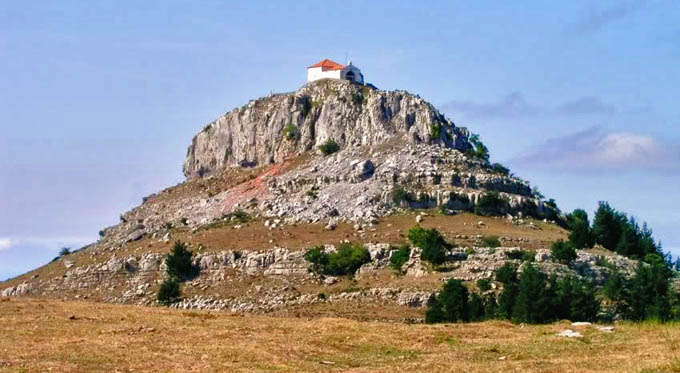The Ermita de las Nieves, surrounded by a white wall, rises near the highest point of Lanzarote. According to historians, an earlier building existed in this place as early as in 1427 r. Building, which is currently available for viewing, dates back to the 17th century and has been rebuilt many times. From the cliff, next to which a chapel was erected, There are breathtaking views of the 6-kilometer Playa de Famara lying a few hundred meters below. A beautiful hiking trail begins in front of the chapel, leading all the way to Ye.
Ermita de las Nieves is easily accessible by car – coming from Teguise, turn left just before Mirador de Harfa, in a marked asphalt road, which after some time turns into a hardened earthen road leading along the cliff to the very gate of the chapel.
Teguise
In the number of approx. 16 thousand. the people of Teguise, the first city founded in the Canary Islands, there is really a lot to see. In addition, in the maze of white streets, numerous shops with handicrafts and charming pubs await tourists..
The city was founded by the village of 1418 r. Maciot of Bethencourt, son of the Conqueror of the Canary Islands, Juana Bethencourta, who after that, how he conquered the Guanche tribe living in these areas, He married the daughter of a chieftain gracefully named Teguise. Practically from the moment of its foundation up to 1852 r. Teguise was the capital of Lanzarote, as evidenced by monuments to this day, which is hard to find in Arrecife. Unusual location inside the island (on the other islands, capitals were usually established on the coast) it was supposed to protect the city and its inhabitants from attacks by privateers. Despite her good intentions, Teguise was plundered several times by pirates – one of the streets of the town is called Calle de la Sangre to commemorate these events ("Bloody street").
You can start your tour with a visit to the 16th-century church of Nuestra Señora de Guadelupe. Outside the church of the three-aisle church, the massive black and red tower draws attention. Inside, it is worth looking at the white plaster altar. The history of the temple is marked by fires – first it was set on fire by pirates several times, a w 1909 r. she caught fire from candles that were not extinguished by altar boys. On the west side of the church there is a small calle La Sangre, which leads to a surprisingly modern and spacious market square.
The oblong white building facing the church is the Palacio Spinola. Built at the end of the 18th century. the palace was the seat of the governor of Lanzarote, and currently serves as the representative seat of the President of the Canarian government. It was renewed in 1974 r. (the work was supervised by Cesar Manrique).
From the church square, c / Reyes Católicos, leads to San Francisco Square, next to which stands the church of Nuestra Señora de Miraflores, popularly known as the Church of St.. Francis. 18th-century temple, the only remnant of a Franciscan order, turned into Museo de Arte Sacro (Museum of Sacred Art). Hundred meters below, at the end of Calle Gran Canaria stands the former Dominican Monastery of Santo Domingo, which now hosts painting and contemporary art exhibitions.
Teguise market
Every Sunday between 9.00-14.00 the old town of Teguise turns into a colorful market, where you can buy almost anything, starting with handicrafts and traditional Lanzarote delicacies, by products from the other islands of the archipelago, up to souvenirs from Africa and Peru. It is the most popular event of this type on the island (tourists are taken by special buses), therefore the person, who do not like crowds and bustle, on this day, they should rather abandon their visit to Teguise. The others, however, should go, especially, that folk artists also sell their products at the market and with a little patience, you can find some really beautiful handicrafts from kitschy souvenirs. There are also often organized performances by folk groups and lucha canaria shows.
